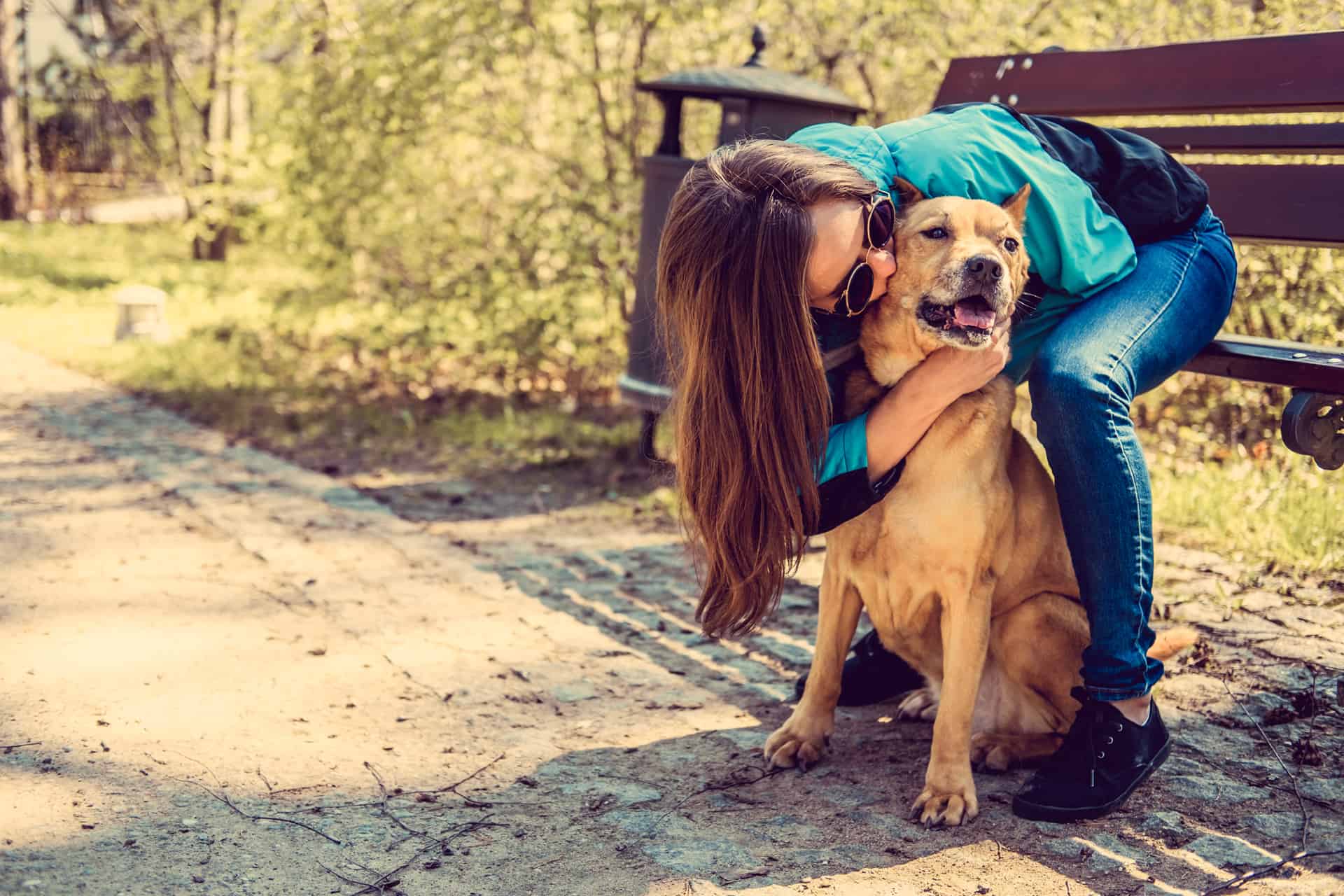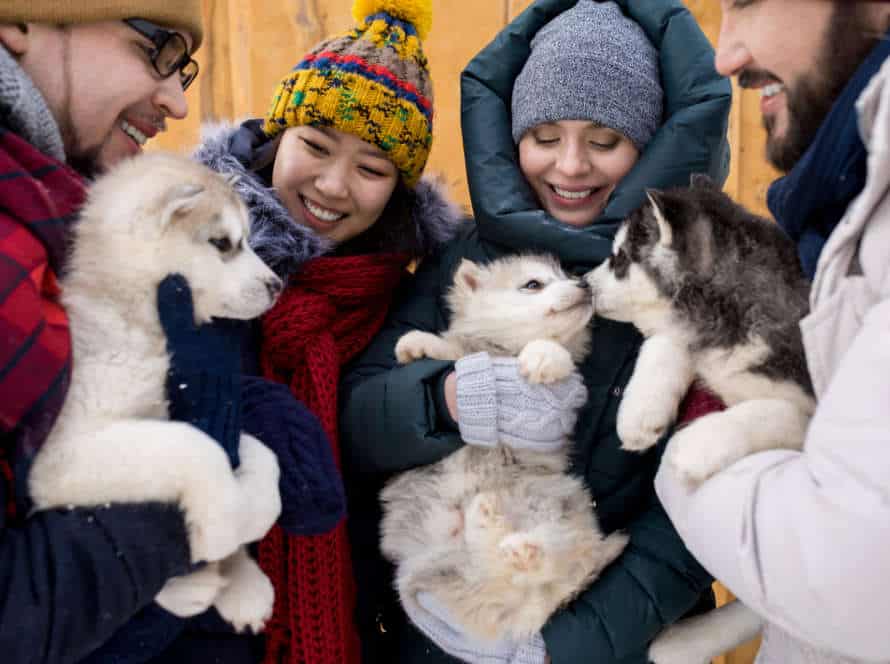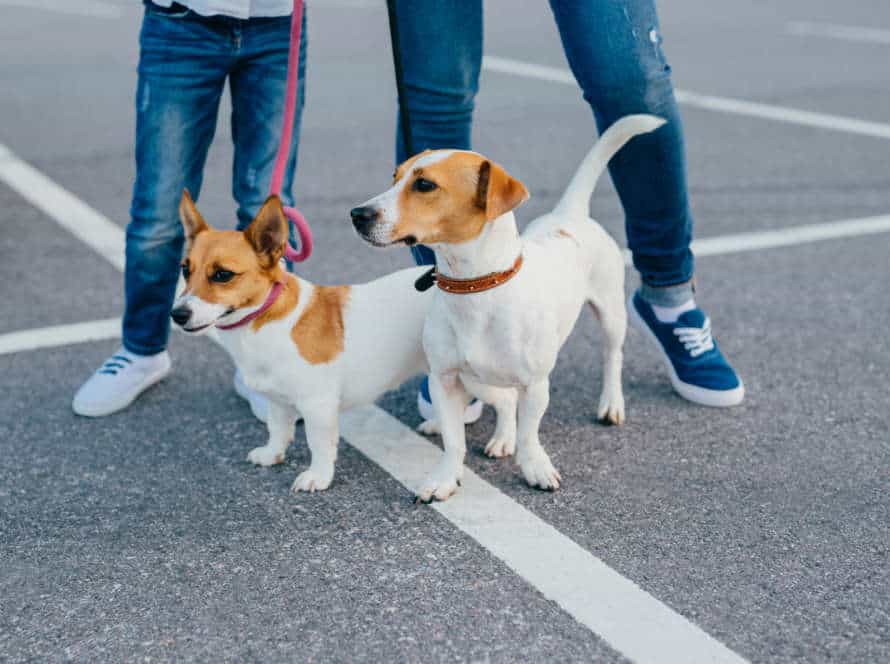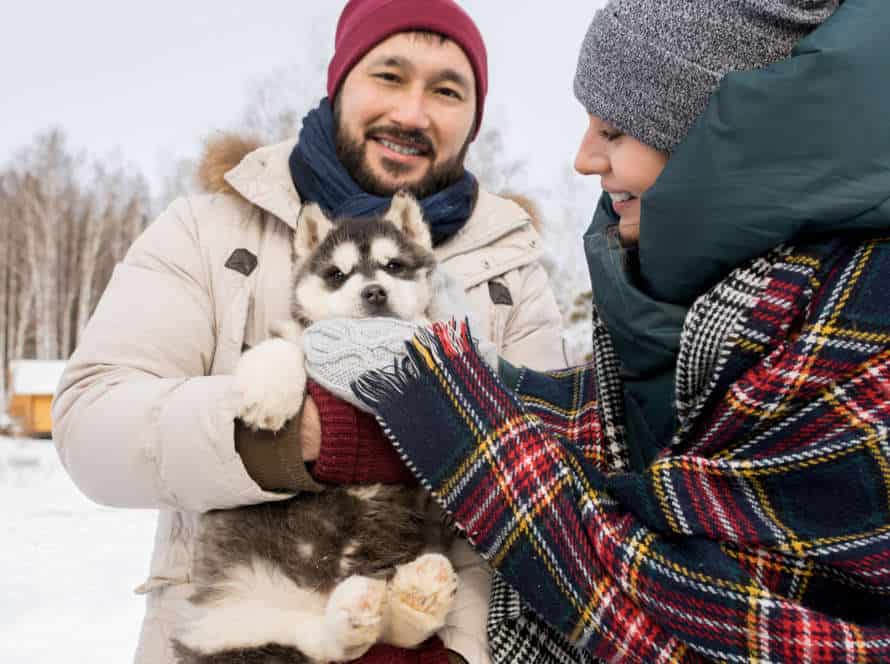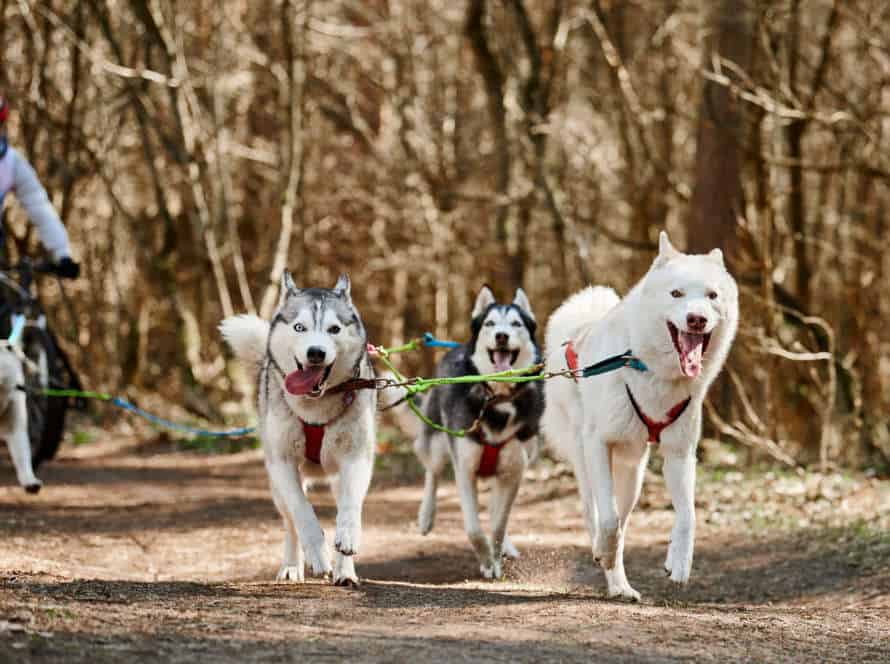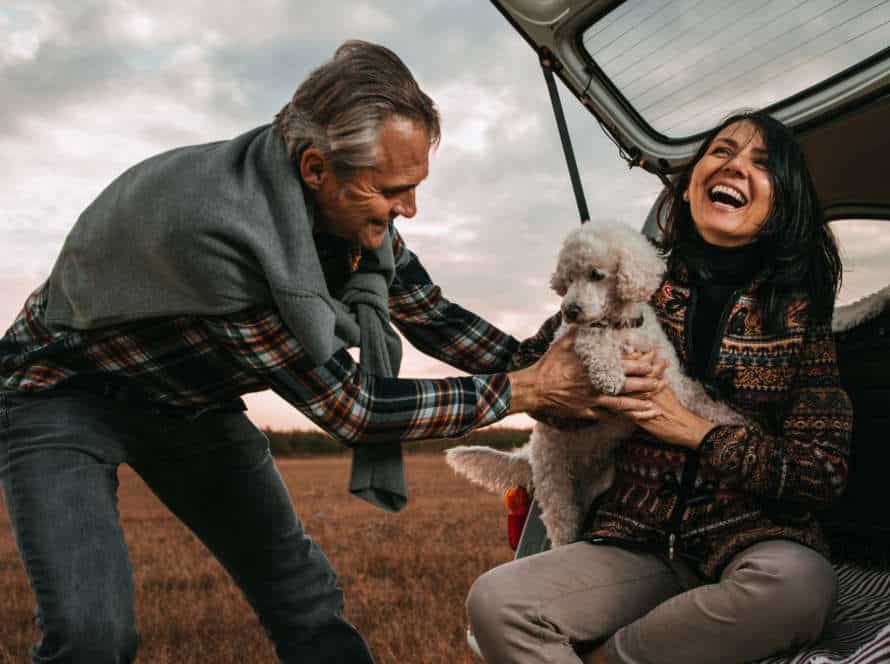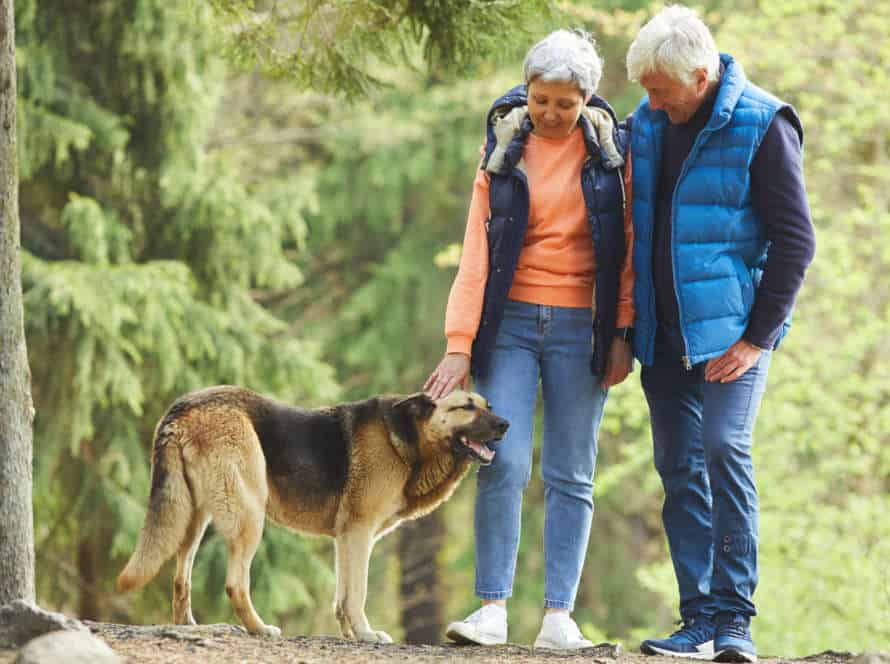Understanding Dog Park Dynamics
Heading to the dog park? Great idea! Exercise for your pup and socialize them with other dogs. But how to handle the dog park dynamics? It’s key to understand your pup and other dogs’ behaviors. To help, this article has tips for navigating the dog park.
Recognize different dog personality types
Do you know your pup’s personality type? Recognizing it can make trips to the park less stressful for both you and your pup. Common types are:
- Social Butterflies: They love to play and interact with other doggies, but can get too excited.
- Wallflowers: They’d rather be alone, and may be anxious or aggressive if other dogs approach them.
- Alpha Dogs: May act dominant or aggressive in social situations. Extra management is needed to avoid conflicts.
- Toy-Oriented Dogs: Very possessive of their toys. Can be aggressive if other dogs want to join in.
- High Energy Dogs: Require lots of exercise and play. Otherwise, they can become restless or anxious.
By understanding these personalities, you can ensure everyone has a safe, pleasant experience at the park.
Learn dog body language
Learning your pup’s body language is key to being a successful doggo owner. Here are some basics to decipher their language:
- Tail position: If the tail is down, they could be scared or submissive. A wagging tail and held high? Excited or happy.
- Ears: Alert ears mean they’re interested or excited. Flat or pinned back? Fear or aggression.
- Eyes: Direct eye contact could mean aggression or challenge. If they look away, they’re submitting.
- Posture: Tense, standing tall, fur raised? They could be aggressive or anxious.
By understanding and learning your pup’s body language, you can have a better relationship with them. Tip: Ask a certified dog trainer or behaviorist to learn more!
Know the difference between play and aggression
Knowing the difference between play and aggression is key for a tranquil experience at the dog park. Play is signified by wagging tails, relaxed body language, and changes in play style. Aggression is shown by rigid body language, growling, baring teeth, and lengthy staring. Though play may look aggressive, look at context and body language. Here are 3 tips for a stress-free park visit:
- Monitor your pup to make sure they’re not being too rough.
- If your pup is aggressive, take them away from the situation.
- Be prepared to leave if it’s too stressful for you or your pup.
Remember, dogs have varied personalities and temperaments; not all dogs enjoy socializing.
Preparing for the Visit
Visiting a dog park is loads of fun for your pup! But if you’re not ready, it can be a bit daunting. Planning ahead and understanding the environment can make your visit much more pleasant – here are some tips. Remember them before your trip!
Ensure your dog is up-to-date on vaccinations
It’s essential to get your pup vaccinated prior to visiting a dog park. That keeps your pup healthy and also helps other canines at the park stay safe. Here are some ideas for a relaxed visit:
- Look around the park before entering. Check for aggressive dogs, park regulations, and other dogs’ activities to identify any potential issues.
- Keep your doggo on a leash until you’re sure it’s safe to let them off.
- Monitor your pup’s behavior and intervene if there are any signs of aggression.
- Don’t forget to bring water for your pup, to keep them hydrated.
By following these tips, you and your pup can have an amazing, stress-free experience at the dog park!
Pack the essentials (water, poop bags, leash, treats)
Heading to a dog park? Make sure to pack the essentials, like water, poop bags, leash and treats.
- Water: Dogs need it to stay hydrated and cool down.
- Poop bags: Don’t forget these – keeping the park clean is key!
- Leash: It’s needed to enter & leave the park, plus to control your pup.
- Treats: Use them as rewards for good behavior and to distract if needed.
Pro-tip: Research the park’s rules & regulations to ensure a safe & fun time.
Keep your dog leashed until inside the dog park
Leash your pup when entering the dog park for a stress-free visit. Here’s how:
- Keep your pup leashed until you’re in the designated off-leash area. This stops any potential escapes or confrontations.
- Check the behavior of dogs already in the park. Wait until they’re calm and busy with play before joining.
- Monitor your pup’s body language and vocalizations while in the park. If they show signs of stress, it may be time to leave.
- Respect other owners and their dogs. Keep an eye on them and your pup.
- Be a responsible owner and make sure your pup’s vaccines and immunizations are up to date, and always clean up after them.
Pro tip: Always exercise caution and be prepared to leave the park if necessary for your pup’s safety and happiness.
Dos and Don’ts at the Dog Park
Heading to the pooch park? Exciting! It’s a fab way for your furry friend to socialize. But, if you’re new to the scene, it can be a bit daunting. Be aware of the Dos and Don’ts to make sure your visit is stress-free. Here’s the breakdown:
Do supervise your dog at all times
When visiting a dog park, it’s essential to supervise your pup. That way, you can keep them and others safe.
Dogs are naturally curious and can get into trouble if left unsupervised. They may act aggressively, such as biting or growling. Other dogs may also have unpredictable behavior.
So, always stay alert and watch your pup while they socialize with other dogs. Don’t leave them unattended to avoid any unpleasantries.
Do pick up after your dog
It’s important to always clean up after your dog when they do their business in public – whether that be in a park or on the sidewalk. It’s not only the proper thing to do, but it also helps keep the area hygienic for all. Here are a few reasons why you should pick up after your pup:
- Stop the spread of diseases and parasites that can be dangerous to dogs and humans.
- Avoid bad smells and make the area more pleasant for everyone.
- Respect other dog owners and the community.
Always have a plastic bag or pooper-scooper with you and throw away the poop in an assigned trash can. Keep in mind, leaving your dog’s droppings on the ground is not only gross, but often against the law.
Don’t bring toys or treats that may cause conflict
Visiting a dog park? Don’t bring toys or treats that may cause conflicts. These can lead to injuries and bad experiences. Instead, let the dogs socialize and play freely. Here’s what to do:
- Know your pup’s personality and behavior around other dogs.
- Provide enough water for all dogs.
- Clean up after your pet.
- Watch out for aggression – intervene if needed.
Avoid these things:
- Toys & treats that your dog is possessive of.
- Letting your pup intimidate or bully others.
- Electric shock collars or choke chains.
- Bringing young children to the park.
Pro Tip: Visit when it’s less crowded. This gives more space for play and less chance of conflict.
Communication with Other Dog Owners
Heading to a Dog Park? Know the 3 Ps! People, Pooches, and the Park. This will ensure you and your pup have a pawsome time. Learn the rules and etiquette of the park. Talk to other owners. Then have a great visit!
Be polite and respectful to other owners
Dogs parks can be a blast! It’s essential to be respectful and polite when playing with other pup owners. Here are some tips:
- Check out the other dogs’ behavior before you take your pup to the park.
- Keep your pup leashed until you’re in the off-leash area.
- Don’t bring toys or treats that could start a fight.
- Make sure to pick up after your dog and throw away their waste.
- Keep an eye on your pup’s behavior and step in if they’re being aggressive to other dogs or people.
- Finally, be courteous, follow the park rules, and avoid any negative encounters.
Don’t be afraid to advocate for your dog
When visiting a dog park, many pet owners feel anxious. But, as a dog owner, it’s important to stand up for your pup and make sure they feel safe. Here’s how:
- Keep an eye on your dog’s body language for signs of comfort.
- Be ready to stop your dog from getting too excited or aggressive.
- If another dog is being hostile, speak up and ask the other owner to help.
- Don’t hesitate to leave if things get unsafe or uncomfortable.
It’s important to advocate for your pup at the dog park. This way, everyone can have a stress-free and enjoyable time!
Leave if an altercation occurs
Nobody likes fights, especially when dogs are involved at the park. If you sense a fight about to happen or your dog is showing signs of aggression or stress, get out of the park quickly. This can help calm down the situation and stop any harm from coming to other dogs or their owners.
Signs of an altercation can be growling, barking, raised hackles, or aggressive body movements. If you see any of these, move fast and stay calm to stop any harm.
Remember, the dog park should be a fun and safe place for all doggies and their people. By leaving if an altercation starts, you are helping create a friendly atmosphere for everybody. Pro Tip: Keep an eye on your dog and know any triggers or signs of stress.
Managing Dog Park Stress
Dog parks are super for pups to socialize and play. But, there’s a few dynamics that you should understand. To make sure the experience is happy for everyone, it’s essential to know how to manage stress. Awareness of your doggies behavior, as well as your own, is key. Here’s some tips for a pleasant visit to the dog park. Managing stress effectively is the goal!
Take breaks if necessary
Visiting a dog park is a great way to give your furry friend exercise and let them meet other furry pals. But it can also be stressful. If you start to feel anxious, it’s important to take a break. Here are some tips:
- Observe your pup’s behavior and body language. Panting, yawning, or pacing? Time for a break!
- Move to a quieter part of the park or leave.
- If another pup is bothering your pup, intervene and split them up.
- Take a stroll outside the park or play fetch to relax your pup before returning.
- Remember to prioritize your pup’s safety and comfort above chatting with other owners.
- Pro-tip: Always bring a water bottle, poop bags, and treats! That’ll keep your pup comfy and safe.
Use positive reinforcement
Positive reinforcement is an effective way to manage stress at the dog park and make it a stress-free experience. Instead of punishing your pup for bad behavior, reward good behavior and build good habits.
Bring treats and toys to use as positive reinforcements. Praise your pup for good behavior like sitting still, following commands or playing nicely with other doggies. Avoid negative reinforcement or punishment such as yelling, hitting or tugging on the leash.
Observe your pup’s body language and remove them from the situation if they seem uncomfortable or stressed. Use positive reinforcement to encourage desired behaviors and build your dog’s confidence in social situations.
Pro Tip: Consistency is key for successful positive reinforcement. Be patient and reward your pup for good behaviors – it will pay off in the end!
Know when it’s time to call it a day.
Dog parks are awesome for our furry pals to mingle and get physical activity. But, it’s key to know when it’s time to leave the park. Here are some tips to help you recognize when it’s time to go:
- Look out for signs of stress or anxiety in your pup, like extra barking, panting, or hiding.
- Monitor your pup’s interactions with other doggos and step in if they become too aggressive or scared.
- Be conscious of your own stress and take a break if it starts to become too much.
- Keep an eye on the time and temperature. Hot weather and long visits can raise stress levels for both you and your pup.
- Pro Tip: Not all dogs are cut out for dog parks, and that’s fine. Some pooches may prefer one-on-one playdates or solo walks. Listen to your pup and do what’s best for their individual needs.
Frequently Asked Questions
Q: How do I know if my dog is ready for the dog park?
A: Start by observing your dog’s behavior around other dogs. If your dog is overly aggressive, fearful, or not well-socialized, it may not be ready for the dog park. Consider consulting a professional dog trainer for guidance.
Q: Can I bring my puppy to the dog park?
A: In general, it is recommended that puppies under six months of age do not go to dog parks, as their immune systems may not be fully developed. Additionally, some adult dogs may be too rough with puppies. It’s best to wait until your puppy has received all of its vaccinations and is a bit older before taking it to the dog park.
Q: What should I bring to the dog park?
A: Bring plenty of water for both you and your dog, as well as a bowl for your dog to drink from. It’s also a good idea to bring poop bags to clean up after your dog. If your dog is not spayed or neutered, it’s recommended to bring a leash and to keep your dog on it until it can be trusted to play without getting into fights or causing a disturbance.
Q: How can I tell if my dog is playing or fighting with other dogs?
A: Look for signs of playfulness, such as a dog bowing, wagging its tail, and taking turns chasing each other. Signs of aggression include raised hackles, growling, snarling, and biting. If there is any doubt, it may be best to intervene and separate the dogs.
Q: What if my dog gets into a fight at the dog park?
A: Try to remain calm and do not put yourself in harm’s way. Use a verbal command to distract your dog, or use a physical barrier to separate the dogs. If necessary, seek the help of other dog owners or the staff at the dog park. It’s important to report any incidents to the appropriate authorities.
Q: Can I use my phone or other devices while at the dog park?
A: It’s best to stay focused on your dog and its behavior while at the dog park. Using your phone or other devices can distract you and prevent you from noticing any potential problems or hazards. It’s important to be present and attentive while at the dog park.

